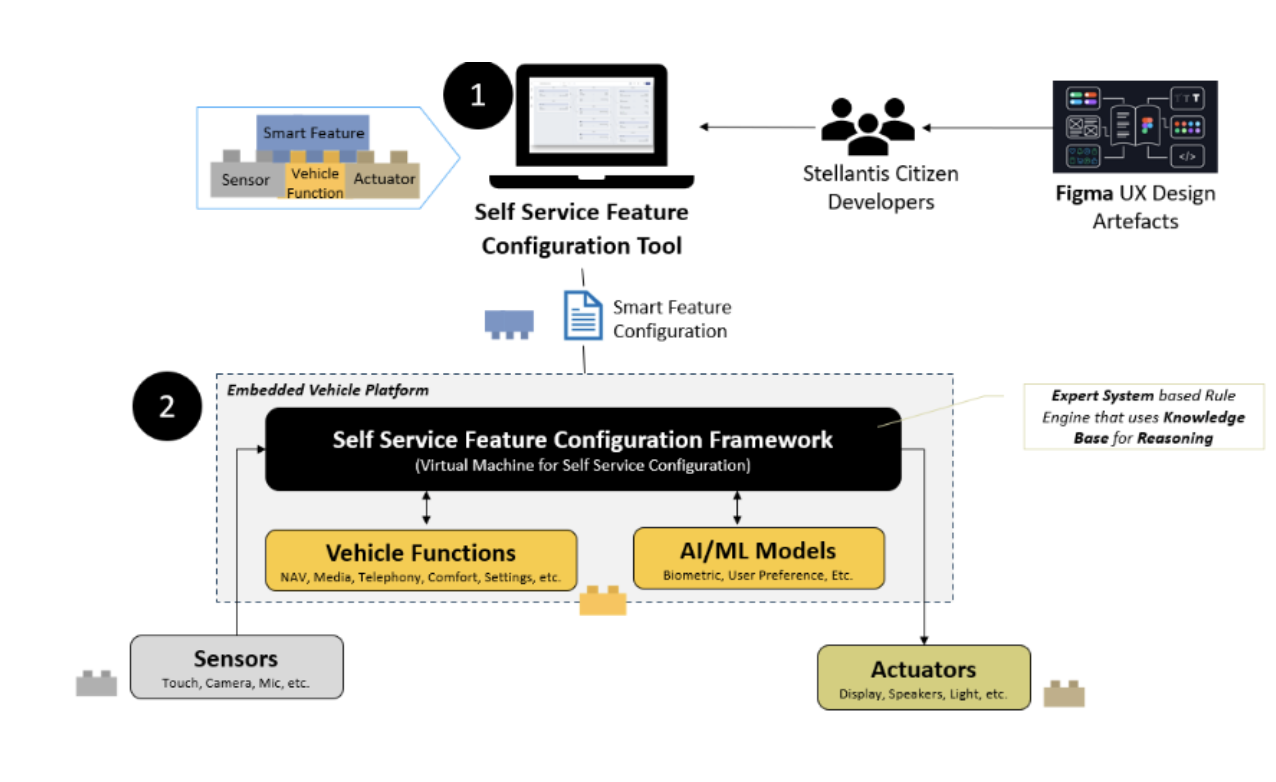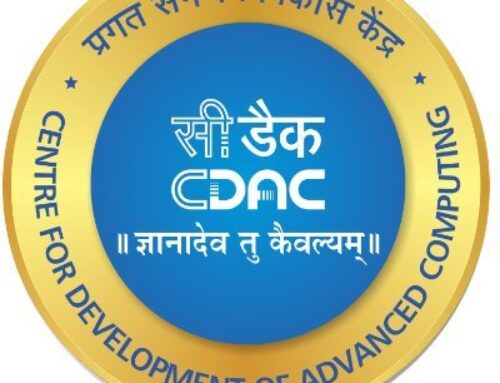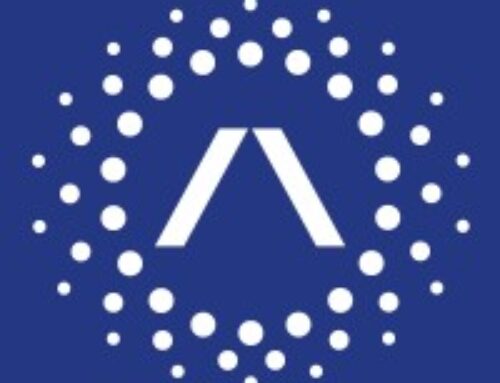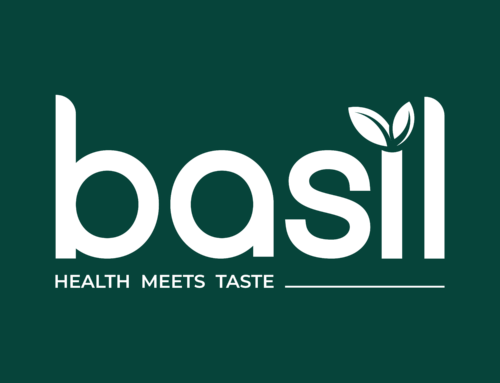Industry Challenge: A Decade-Long Struggle
For over ten years, the automotive industry has been striving to shorten the product development lifecycle from years to months. Despite persistent efforts, success has remained elusive. Stellantis, as part of its Dare Forward 2030 vision, has set a bold objective: reduce feature lifecycle timelines by minimizing complexity across all levels of product development.
To achieve this, we identified three core challenges:
- Hard-to-Discover Product/Platform Capabilities
Even seemingly simple car features require collaboration across multiple hardware and software components. The absence of a centralized, accessible catalog for this information leads to prolonged discussions between product management and engineering teams. - Communication Overhead
Feature specifications often pass through multiple stages, resulting in gaps and misalignments. This can lead to engineering teams delivering features that don’t align with the original vision. - Limited Innovation Participation
Feature development is typically restricted to engineering teams, whose primary focus is on timely delivery. The industry has struggled to engage a broader range of employees in the innovation process.
The Solution: A Low-Code/No-Code Platform
Overview: Low-Code/No-Code Platform
In today’s world, organizations are becoming smarter and agile by adopting new approaches that can deliver software applications at a high speed. The new approaches attempt to eliminate technical expertise required in traditional software development and enable every employee of the organization to develop software applications independently. This approach called Citizen Development, is implemented through intuitive visual low-code no-code platforms for people to simply drag and drop pre-defined functional components, define the logic, and test the outcome without writing a single line of code, or even by customizing the code if required. In short, organizations are marching towards a smarter world, by giving their people an environment to innovate more, reaping great benefits towards Experience Led Transformation Journey
Our Approach for Low-Code/No-Code Platform
Drawing inspiration from low-code platforms popular in the consumer and IoT industries, we developed a first-of-its-kind solution tailored for automotive applications. Our Low-Code platform addresses the challenges head-on:
- Platform Catalog
This comprehensive catalog lists all platform capabilities, simplifying the addition of new ones via industry-standard formats. It ensures that feature developers clearly understand what’s available. - Visual Programming Canvas
Developers can directly configure features using a visual programming interface, bypassing the need for detailed specifications and reducing reliance on engineering teams. This approach guarantees that the final product aligns perfectly with the author’s vision. - Democratized Innovation
By integrating the Platform Catalog and Visual Programming Canvas, Stellantis empowers all employees—regardless of technical background—to create vehicle features that solve real-world commuting challenges. This self-service model unlocks untapped innovation within the organization.
Overview: Self-Service Feature Configuration
Our Self-Service Feature Configurator is built on two foundational components:
- A Web Portal
Accessible to all Stellantis employees, the portal includes tools such as the Platform Catalog, Visual Programming Canvas, and an Integrated Feature Simulator. Stellantis employees can log-in into the Web Portal, browser platform capabilities and can quickly configure features (like assembling building blocks) using an in-built visual programming canvas using drag and drop paradigm. After the feature is configured, Stellantis employees can test the logic and flow of the feature using an integrated feature simulator. Post successful testing, the feature can be pushed and tested on Cockpit system. - Embedded Framework
This framework offers an expert system-based runtime environment to execute self-service features. These expert systems mimic human decision-making, enabling advanced automation and efficiency.
Through this platform, vehicle sensors, actuators, and functions become configurable building blocks. Developers can structure these blocks to create and deliver new car features quickly. Notably, our platform can even accept Figma UX designs, automating HMI workflows through workflow automation and auto code generation.

Business Impact and Future Potential
Over the past two years, this platform has started delivering self-service features for production programs. Early results indicate:
- Streamlined Development Process: SSFC simplifies feature modeling and auto-code generation, significantly reducing the steps required for feature development.
- Empowered Citizen Developers: By embracing diversity and inclusivity, SSFC democratizes innovation, enabling employees from various backgrounds to participate actively.
- Feature building Blocks: Sensors, vehicle functions, and actuators are transformed into modular, configurable components, fostering creativity and flexibility.
- Measurable Gains:
- 40-80% reduction in feature development efforts
- Significant decrease in development cycles—from months to days or weeks
- Projected 30% improvement in organizational innovation scores
- Enhanced business agility
These metrics align with the broader goals of Stellantis’ vision: to lead in customer experience and reduce complexity across the innovation stack.
Examples of Low-Code Self-Service Features
- Zero-Touch (Contextual) Activation
Class of features that contextually activate based on Vehicle and/or User Context. E.g., Automatically turn on seat heating based on external temperature. - One-Touch Activation
Set of features that are activated with a single touch. E.g., Enable Car Wash Mode with a single button press. Enabling car wash activates a set of actuators include windows, sunroof, light indicators, gear status, etc. - Hands-Free Activation
Configure one or more Vehicle Functions based on voice commands. E.g., Use voice commands to control features like voice control of air conditioning and comfort feature - UX Screens and Workflow
Features involving user workflow designed through UX Screens and touch/gesture interaction design.
Example: Car Wash Mode having interactive screens to configure car wash mode and related user journey.
Business Impact and Future Potential
Over the past two years, this platform has started delivering self-service features for production programs. Early results indicate:
- A 40-80% reduction in feature development efforts
- A significant decrease in development cycles—from months to days or weeks
- A projected 30% improvement in organizational innovation scores
These metrics align with the broader goals of Stellantis’ Dare Forward 2030 vision: to lead in customer experience and reduce complexity across the innovation stack.
Moreover, the ability to engage “Citizen Developers” not only improves organizational inclusivity but also provides new avenues for innovation. All Employees can now contribute directly, offering fresh perspectives on customer-centric features.
Broader Implications for the Automotive Industry
The shift to a low-code/no-code model marks a paradigm shift in the way automotive features are developed. Traditional development models rely heavily on domain expertise and siloed workflows, which limit speed and scalability. By democratizing the development process:
- Reduced Time-to-Market: Features can be conceptualized, developed, and deployed within days rather than months.
- Increased Flexibility: Rapid iterations and prototyping ensure that features remain aligned with evolving customer expectations.
- Cost Efficiency: With streamlined processes and reduced dependency on specialized engineering teams, development costs can be significantly reduced.
- Enhanced Competitiveness: Companies adopting such platforms can outpace competitors in terms of feature innovation and deployment speed.
- Inclusive Innovation: To develop vehicle features, one may not have deep technical expertise in automotive domain.
Conclusion
The traditional methods of continuous improvement are no longer sufficient in today’s competitive landscape. By adopting a moonshot approach with our Low-Code platform, Stellantis is set to transform automotive innovation, achieving unmatched agility and speed to market. This platform not only democratizes feature development but also positions Stellantis as a leader in delivering exceptional customer experiences.
As we move forward, we will continue to monitor key performance indicators, refining our approach to ensure sustained success. Stellantis’ Self-Service Feature Configurator represents a bold step toward a future where innovation is accessible, efficient, and inclusive for all.







